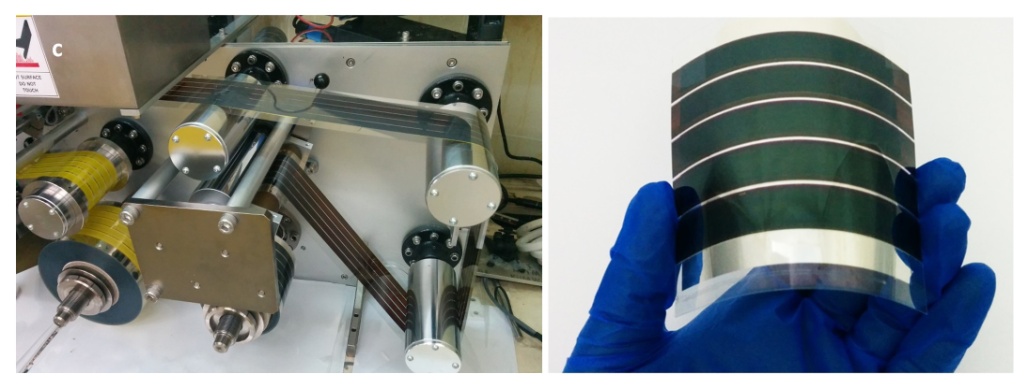Media Center
A multimedia mosaic of moments at GIST
GIST Excellence
[Press Release] Prof. Dong-Yu Kim’s Team Demonstrates Low-Cost, Large-Area Perovskite Solar Cells
- 정명식
- REG_DATE : 2015.02.23
- HIT : 1035
Roll-to-Roll
Fabrication of Fully Slot-Die Coated Perovskite Solar Cells Published in Advanced Materials
Study
Hoped to Expedite Mass Production and Commercialization of Perovskite Solar
Cells

A Korean-Australian joint research team has demonstrated the possibility of low-cost, large-scale mass production of high-performance perovskite solar cells by using a roll-to-roll process with a slot-die coating method. The study is expected to contribute to the commercialization of perovskite solar cells, which are emerging as a promising renewable energy device.
The
research was led by corresponding authors Prof. Dong-Yu Kim of GIST School of
Materials Science and Engineering and Dr. Doojin Vak of The Commonwealth
Scientific and Industrial Research Organization (CSIRO), conducted by first
author Mr. Kyeongil Hwang and other researchers of GIST and CSIRO, and
supported by a grant from the National Research Foundation of Korea under the
Ministry of Science, ICT and Future Planning.
The
research results were online published on January 7, 2015 in Advanced Materials (Title: Toward Large
Scale Roll-to-Roll Production of Fully Printed Perovskite Solar Cells).
Recently,
perovskite solar cells have emerged as promising next-generation solar cells
with a high efficiency of up to 20%, which is comparable to that of commercialized
silicon solar cells. However, perovskite
solar cells have been made by a vapor deposition process or a spin
coating process, and no scalable method has been used to fabricate perovskite solar cells.
The research team for the first time demonstrated
fully printed perovskite solar cells with a scalable method of slot-die coating
in a roll-to-roll process. By introducing nitrogen gas-blowing to the fabrication
procedure, the wet perovskite film could be quickly dried and be free from
pin-holes, which are an origin of device failure. The perovskite solar cell
devices made with the well-controlled printing process showed an efficiency of 12%,
which is comparable to that of spin-coated devices.
In addition, the research team for the first time
demonstrated perovskite solar cell modules with the size of 40 square centimeters, 400
times larger than the typical 0.1 square centimeter cells made for research
purposes.

Professor Kim said, "Our study clearly shows the possibility of low-cost mass production of perovskite solar cells. It represents the first-ever successful fabrication of a perovskite solar cell module based on a roll-to-toll process, and as such, is expected to provide an important stepping stone towards the commercialization of perovskite solar cells."